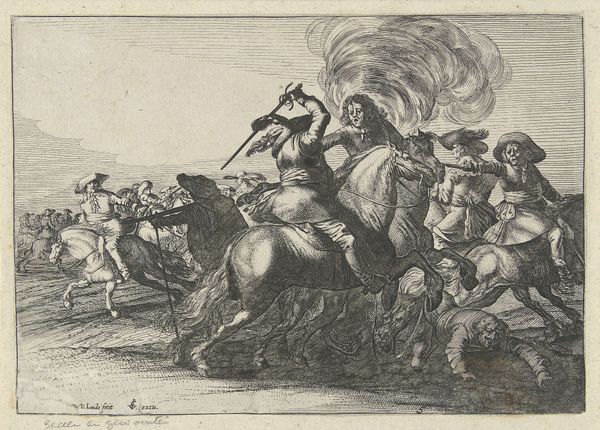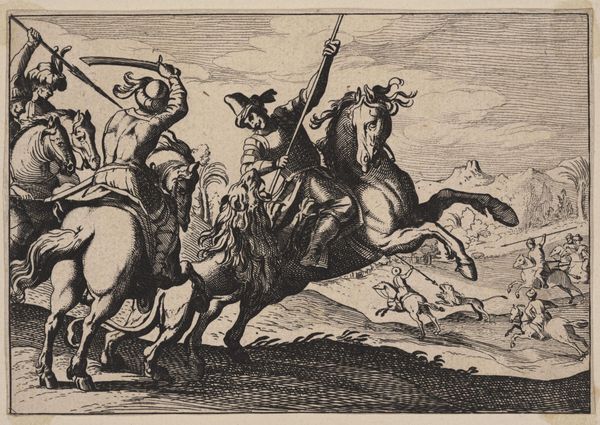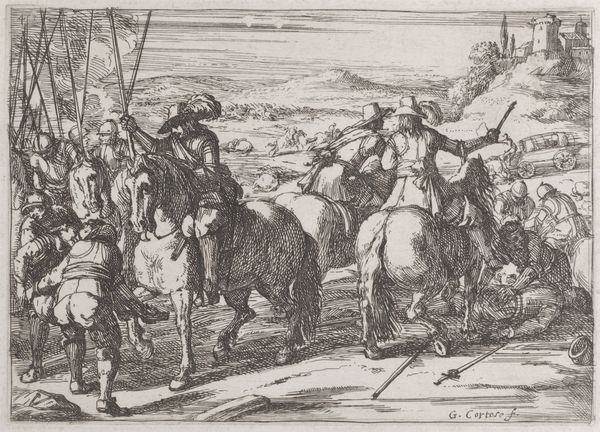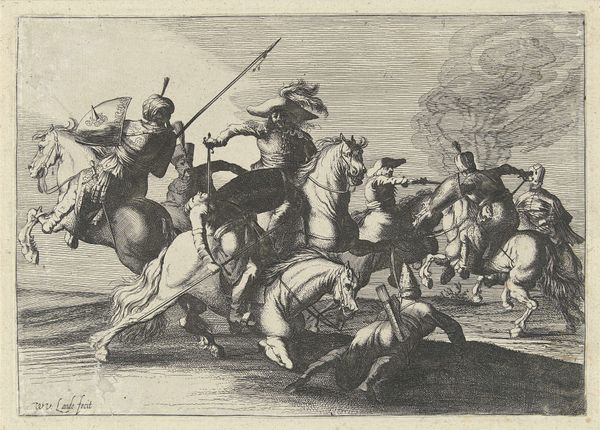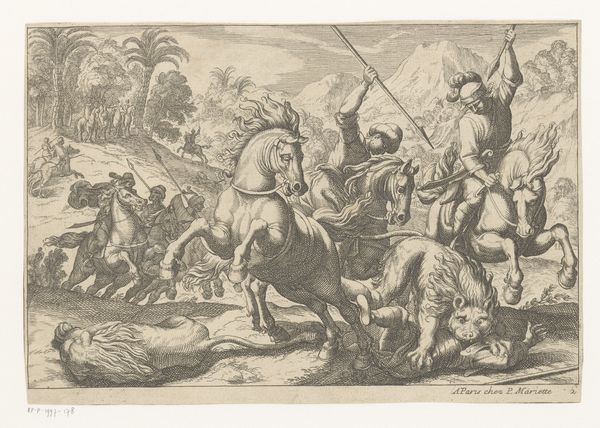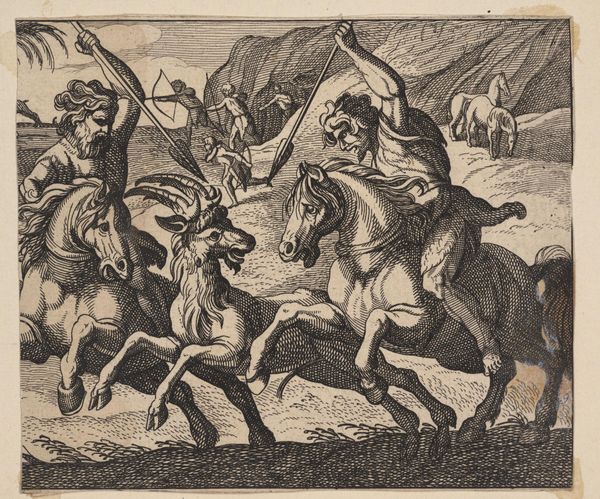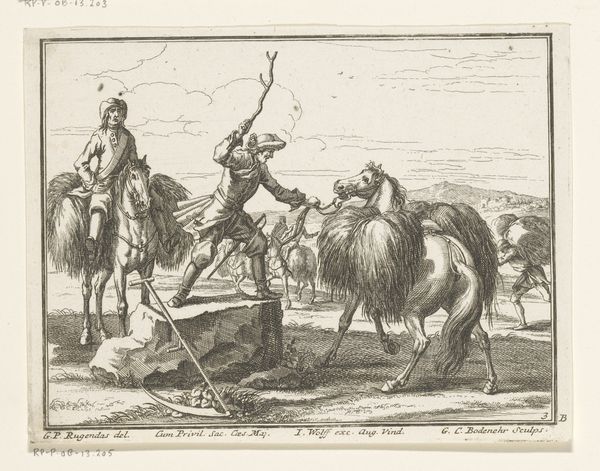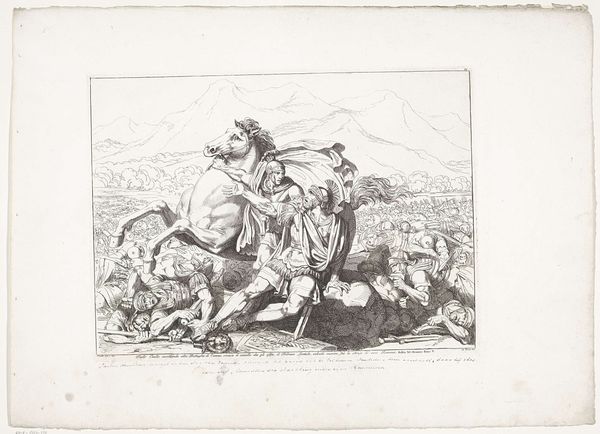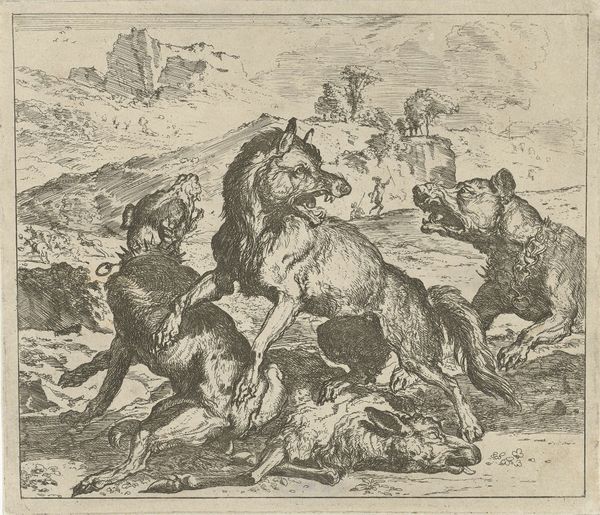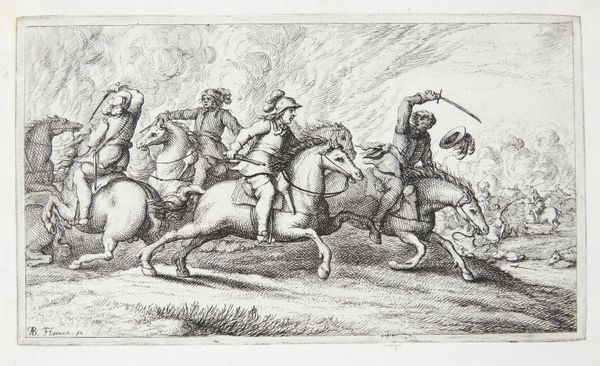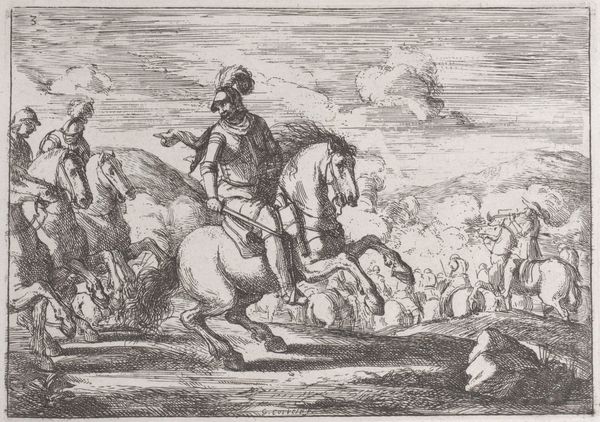
Dimensions: 70 mm (height) x 111 mm (width) (bladmaal)
Curator: Looking at A. Fabricius' 1855 woodcut, "Kalø Ruiner," currently residing at the SMK, one immediately sees a dynamic scene played out in stark black and white. What's your initial read of it? Editor: Utterly bleak, isn't it? The strained horses, the grim faces… There's a tangible sense of struggle, like the entire community is pitted against some elemental force. You feel that the stark contrast, which highlights labour, actually heightens that somber mood. Curator: I agree. I am sensing an atmosphere of relentless labor, of folks stubbornly clinging to place despite its visible hardship, but for all that labouring it’s the looming castle in the background that really catches my eye. The weight of history and resilience feels almost palpable, the fact that is made as a woodcut reinforces the harsh reality portrayed here. It’s as if the weight of their history and social condition rests heavily upon these laborers. Editor: Precisely! You see the immediate connection between these individuals and the work necessary to maintain a feudal structure—consider the social relationships the process of woodcutting fostered and the impact these had to the contemporary culture—, suggesting the exploitation inherent to these settings. It provokes me into contemplating both the artist's own means of living through woodcutting and its cultural implications, in tandem with that raw expression of labor in every line. Curator: Right! And given the Romantic period backdrop and considering how easily and rapidly print spread in those years, this image speaks more volumes about longing and a somewhat sentimental view of working class than true and respectful analysis. As a piece created and shared across time by means of laborious cutting, in every impression we may recognise and honour each pair of tired hands cutting it, both depicted in the work as well as those that crafted this material thing of art, in order to better and perhaps romantically transmit this specific vision of place and time! Editor: I can certainly consider those views, yes; Fabricius gives us a great opportunity to ponder about all of this at length, though the discussion about process as we walk past here must close! Curator: An observation fully taken on board!
Comments
No comments
Be the first to comment and join the conversation on the ultimate creative platform.
